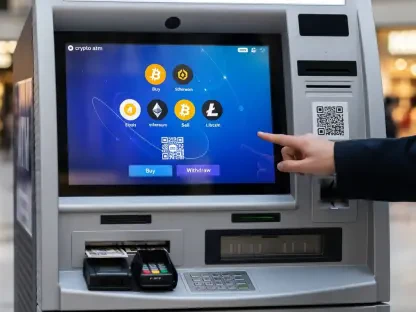India’s e-retail sector is undergoing a significant transformation, driven by emerging business models such as trend-first commerce, hyper-value commerce, and quick commerce. This shift is fueled by a youthful, digitally-savvy population and diverse consumer behaviors across the nation. The convergence of these elements is shaping a dynamic future for India’s e-retail landscape.
Trend-First Commerce: Capturing the Pulse of Youth
Rising Influence in Fashion
Trend-first commerce is making waves, particularly in the fashion segment. The model focuses on regularly introducing trendy collections at competitive prices, resonating deeply with Gen Z and trend-aware millennials. As a result, online channels leveraging trend-first commerce are on track to contribute significantly to the fashion market, potentially adding $8 to $10 billion by 2028. Prominent platforms like Flipkart Spoyl, Myntra Fwd, and Shein are actively capitalizing on this model’s potential. Additionally, newer brands such as Urbanic, Snitch, and NewMe are rapidly gaining traction, while established offline players like Zudio, H&M, and Zara maintain robust trend-first propositions.
The global success of trend-first commerce can be attributed to a well-defined strategic playbook. This approach involves aggressive social media utilization to engage Gen Z, algorithm-driven trend spotting to facilitate daily product launches, scalable operations to replenish fast-selling items, and creating bespoke user experiences that prioritize novelty and engagement. The fashion industry is being revolutionized by this model, which ensures a steady flow of new and engaging content that keeps the target audience captivated and eager for more.
Strategic Playbook for Success
The strategic playbook that has driven the global success of trend-first commerce is multifaceted. It extensively uses social media platforms to resonate with Gen Z, who are known for their social media proficiency. By leveraging algorithms to identify trends, companies can promptly introduce new products that align with current consumer preferences. This strategy ensures a continuous pipeline of fresh merchandise, thereby maintaining consumer interest. Moreover, scalable operations allow for the quick replenishment of popular items, ensuring demand is met efficiently.
Creating personalized user experiences is another key aspect of this strategic approach. By focusing on engagement and novelty, brands can foster a loyal customer base. This model is not limited to fashion; its principles can be applied across various sectors, emphasizing the importance of adapting to the evolving consumer demands fueled by digital trends. The trend-first commerce model stands as a testament to how innovation and strategic execution can reshape traditional retail landscapes.
Hyper-Value Commerce: Meeting Budget-Conscious Shopper Needs
Appeal of Ultra-Low Prices
Hyper-value commerce is carving its niche within India’s e-retail sector by offering ultra-low price assortments that strongly appeal to lower-middle-income shoppers. This business model has gained significant traction in Tier-2 and smaller cities, mirroring the success of platforms like Temu in the United States. Hyper-value commerce’s share of India’s e-retail GMV saw an impressive rise, jumping from 5% in 2021 to over 12% by 2024. Competitive pricing is the cornerstone of this model, complemented by seller onboarding via zero-commission structures and seller financing strategies. These approaches enable a broader range of sellers to participate, further fueling growth.
The influence of Gen Z is particularly pronounced in hyper-value commerce. As nearly 40% of India’s e-retail shopper base, Gen Z exhibits experimental purchasing behaviors, spreading their transactions across multiple platforms and gravitating towards insurgent fashion brands. Social media’s sway on Gen Z cannot be overstated — approximately 70% of this demographic discovers brands online, makes quick purchase decisions, and predominantly uses UPI for transactions. As their economic power rises with increasing incomes, Gen Z is poised to be a substantial force in driving the hyper-value commerce market forward.
Gen Z’s Experimental Purchasing Patterns
Gen Z’s experimental purchasing patterns play a crucial role in hyper-value commerce. This segment tends to diversify its buying habits, often exploring multiple platforms rather than sticking to a single retailer. Their inclination towards insurgent fashion brands reflects a preference for variety and novelty. Social media significantly influences Gen Z’s shopping decisions, making them prone to quick, impulsive purchases based on online recommendations and trends. The convenience and efficiency of UPI transactions further support their fast-paced purchasing behavior.
As Gen Z continues to evolve economically, their growing incomes will amplify their impact on the market. Their experimental nature and tech-savvy approach make them an ideal target for hyper-value commerce, which thrives on competitive pricing and broad assortments. Understanding and catering to the unique preferences of Gen Z is imperative for brands aiming to succeed in this segment. Future growth in hyper-value commerce will likely be driven by innovations that align with Gen Z’s dynamic shopping habits and digital engagement.
Regional Consumer Behavior: Diverse Preferences
Distinct Regional Demands
Consumer behavior in India varies significantly across regions, influenced by factors such as urbanization, affluence, and local culture. Northern shoppers often view brands as symbols of social status, favoring bold and trendy fashion choices. In contrast, Southern shoppers prioritize brand quality, reflecting a more discerning approach to purchases. The Northeast showcases a demand for smaller clothing sizes, signifying diverse body types and preferences. These regional differences necessitate tailored marketing strategies and localized product assortments to effectively cater to distinct consumer needs.
The diversity within regions is further exemplified by variations in purchasing patterns within the same city. For example, students in Eastern Rajasthan typically prefer sports footwear near education centers, while casual footwear remains popular in the southern districts. Similarly, snack consumption varies across different areas of Bengaluru — ready-to-eat party snacks are favored in Koramangala, whereas JP Nagar and Banashankari have distinct consumption profiles. The importance of localizing product assortments cannot be overstated, as understanding and adapting to these nuanced preferences is essential for brands to succeed in the Indian e-retail market.
Urban and Rural Purchase Patterns
Urban and rural purchase patterns in India demonstrate substantial differences. Tier-2 and smaller cities now display e-retail spending patterns that increasingly resemble those of metro areas. Consumers in these markets are showing a growing inclination towards premium features and brands, viewing sponsored listings as indicators of product quality. Mature e-retail ecosystems in cities like Coimbatore and Vadodara highlight higher per-shopper spending compared to cities like Prayagraj and Warangal. Despite the differences, a common trend is the preference for premium products and insurgent brands, driving higher selling prices across various categories.
Brands need to navigate these varied demands, investing in tailored strategies that address both urban and rural preferences. By aligning offerings with local trends and investing in targeted advertising, businesses can enhance brand discovery and cater to the diverse needs of consumers. Recognizing the evolving buying behaviors across different regions is critical for tapping into India’s expansive e-retail market.
Quick Commerce: The Need for Speed
Growing Dominance in E-Grocery
Quick commerce is becoming a dominant force in India’s e-retail sector, particularly in the e-grocery segment. As of 2024, over two-thirds of e-grocery orders and a significant portion of e-retail expenditures were recorded on quick commerce platforms. This model is characterized by rapid delivery, fulfilling consumer demands for speed and convenience. Leading operators like Flipkart Minutes, Myntra’s M-now, and Amazon’s Tez are pioneering this space, ensuring that consumers receive their orders swiftly.
The projected annual growth rate of over 40% until 2030 underscores the increasing consumer preference for quick commerce. This trend is fueled by the desire for immediate gratification, making rapid delivery options indispensable in modern e-retail strategies. Companies are continuously innovating to enhance their delivery capabilities, emphasizing efficiency and reliability. Quick commerce stands out as a pivotal component of India’s e-retail evolution, meeting the growing consumer demand for speed and quality.
Investment in Speed and Quality
India’s e-retail industry is experiencing a major transformation, spurred by novel business models such as trend-first commerce, hyper-value commerce, and fast delivery services known as quick commerce. This evolution is largely driven by the country’s youthful, digitally adept population and a wide range of consumer behaviors unique to various regions. The combination of these factors is paving the way for a dynamic and ever-evolving e-retail landscape in India. These business models leverage technology and data to cater to the specific demands of consumers, ensuring that the e-commerce sector remains competitive and responsive to trends. Additionally, the growth of mobile internet access has broadened the reach of e-retail platforms, allowing even those in smaller towns and rural areas to participate in the digital marketplace. Consequently, India’s e-retail sector is not just growing but also adapting rapidly, setting a precedent for how emerging markets can harness technology to meet diverse consumer needs and preferences.









